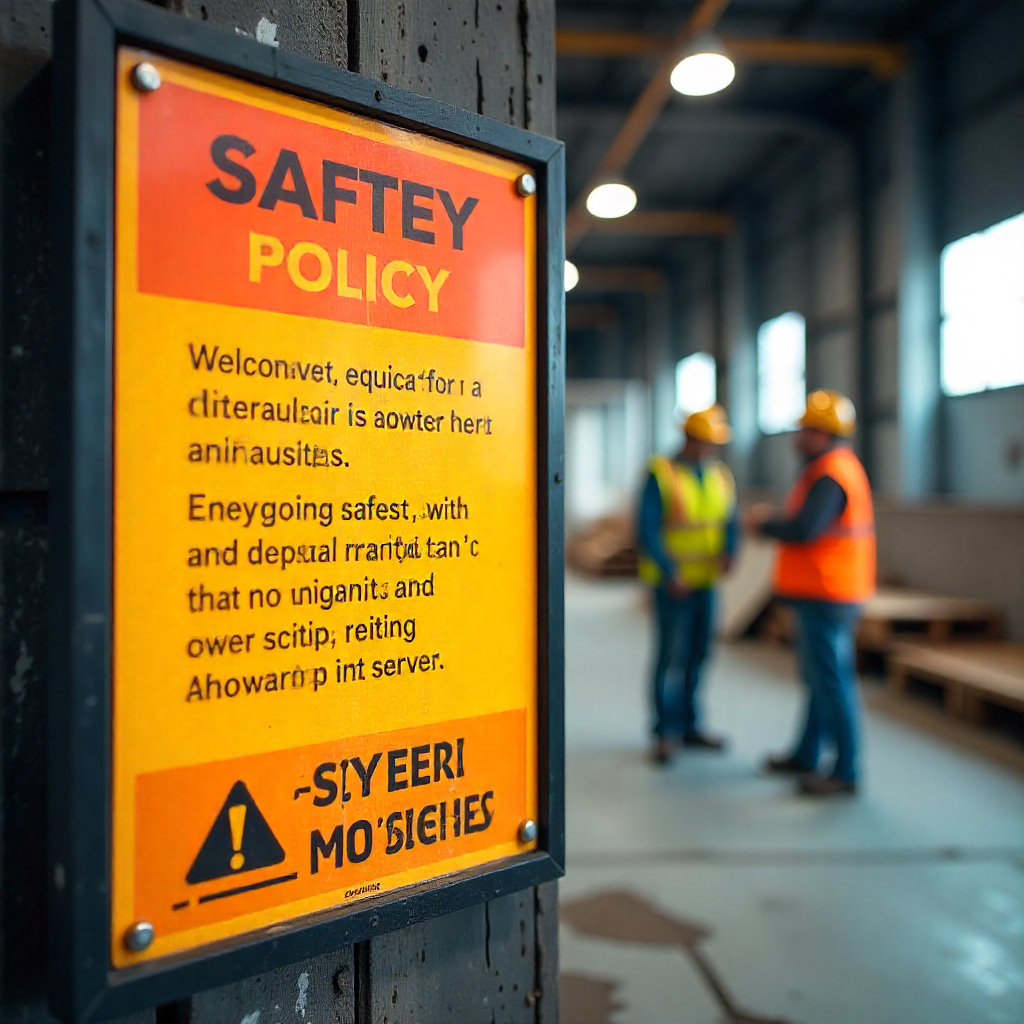
A workplace safety and health policy is more than a formal statement that ticks a compliance box. It is the backbone of any organization’s commitment to protecting its people, its assets, and its reputation. A policy that is well thought out, clearly communicated, and consistently enforced serves as a guide for how work is done safely, and how risks are managed effectively. It goes beyond a document to become part of the culture, influencing attitudes, decisions, and behaviors. Without such a policy, safety practices often become reactive, fragmented, and inconsistent, leading to increased chances of incidents. With a strong policy in place, however, safety becomes an intentional act woven into the daily fabric of the organization.
Why Having a Clear Policy Helps Prevent Incidents
A clear safety and health policy provides direction. It defines expectations, sets standards, and creates a framework for decision-making at every level of the organization. In many workplaces, incidents occur not because workers are careless, but because they are unsure of what is expected or lack clarity on safe procedures. Ambiguity creates room for assumptions, and assumptions often lead to unsafe acts.
When employees are given clear guidance on safe operating practices, hazard identification, and reporting processes, they are empowered to make informed choices. A clear policy also ensures consistency. Instead of each department or team improvising their own safety measures, the policy aligns everyone under one unified approach. This consistency reduces confusion, eliminates conflicting practices, and promotes a safer working environment overall.
In addition, a well-defined policy helps prevent incidents by reinforcing proactive measures. It encourages employees to identify hazards before they escalate into accidents and to view risk management as part of their everyday routine. Over time, this clarity fosters a culture where safety is not left to chance but is managed deliberately through well-understood standards.
How Each Employee Contributes to Policy Success
The success of a safety and health policy is not determined solely by its content but by how well it is lived out in the workplace. Every employee has a role to play in making the policy effective. Safety cannot be delegated to a single department or left in the hands of supervisors alone. It requires the active participation of everyone, from frontline workers to administrative staff and contractors.
Employees contribute to policy success by adhering to established procedures, using protective equipment appropriately, and taking personal responsibility for their actions. Beyond compliance, employees also play a vital role in observing and reporting hazards, suggesting improvements, and supporting their colleagues in working safely. For example, when one employee intervenes to remind another about proper lifting techniques or the need to wear eye protection, that action reinforces the spirit of the policy.
It is also important to recognize that employees bring unique insights into workplace risks. Those performing the tasks are often the first to notice potential dangers or ineffective controls. By creating an environment where employees feel comfortable voicing concerns without fear of blame, organizations tap into a powerful resource that strengthens the safety system. The more employees are engaged, the stronger the policy becomes in practice.
Leadership Accountability in Enforcing the Policy
While employees are central to implementing the policy, leadership plays a critical role in setting the tone and ensuring accountability. A policy, no matter how well written, has little value if leaders fail to enforce it consistently. Leaders are responsible for demonstrating commitment through their decisions, their behavior, and the resources they provide.
Supervisors and managers must lead by example. If leaders ignore safety rules or prioritize production over safety, employees quickly notice the disconnect and may follow suit. On the other hand, when leaders visibly model safe behavior, allocate time and resources to safety training, and consistently address unsafe practices, they reinforce the message that safety is non-negotiable.
Accountability also requires leaders to establish clear systems for monitoring and measuring compliance. Regular inspections, audits, and performance reviews help identify gaps and ensure that the policy remains relevant and effective. Leaders must also recognize and reward safe behavior, while addressing non-compliance firmly but fairly. In doing so, they reinforce that the safety and health policy is not optional but an integral part of organizational success.
What Happens When Policies Are Ignored
Ignoring safety and health policies can have serious consequences. At the most immediate level, it puts workers at risk of injury, illness, or even death. The physical and emotional toll of an incident on employees and their families cannot be overstated. Beyond the personal impact, ignoring policies exposes the organization to legal liabilities, regulatory penalties, and reputational damage.
When policies are disregarded, it also creates a culture of indifference. Employees begin to believe that shortcuts are acceptable, and unsafe behavior gradually becomes normalized. Over time, this erodes trust between workers and management. Once trust is lost, it becomes extremely difficult to rebuild a strong safety culture. Productivity may also decline, as incidents lead to downtime, investigations, and disruptions.
In many cases, a single act of neglect can have consequences that ripple across the organization and beyond. A chemical spill caused by failure to follow handling procedures, for example, can impact not just workers but also the surrounding community and environment. Recognizing the consequences of ignoring policies reinforces why compliance must remain a top priority.
Making Safety a Shared Responsibility
The most effective safety and health policies are those that make safety a shared responsibility. This means that safety is not confined to checklists or inspections but is embraced as a collective value. Each individual understands their role, leaders actively enforce standards, and teams look out for one another.
Shared responsibility builds a culture of accountability where everyone feels ownership of safety outcomes. Employees are encouraged to speak up about hazards, management listens and acts on concerns, and recognition is given to those who contribute positively. Instead of seeing safety as an additional task, people begin to view it as an inseparable part of how work is performed.
When safety is shared, organizations also become more resilient. They are better able to adapt to new risks, respond quickly to incidents, and maintain safe operations even under pressure. The policy ceases to be a static document and becomes a living agreement between all members of the organization, uniting them around the common goal of protecting health and well-being.
Conclusion
A safety and health policy is the cornerstone of a strong safety culture. It prevents incidents by providing clarity, empowers employees to play their part, demands accountability from leadership, and highlights the dangers of neglect. Most importantly, it fosters a sense of shared responsibility where safety becomes an everyday value rather than an afterthought. By treating the policy as a living commitment rather than a formality, organizations not only comply with regulations but also create workplaces where people feel protected, respected, and valued.
 Richard Mills
Richard Mills